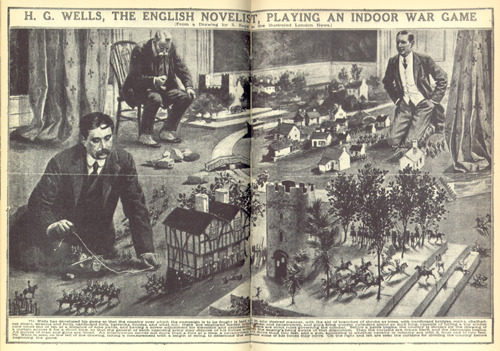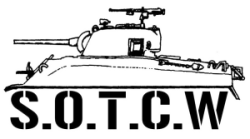Russell Phillips's Blog, page 18
June 14, 2013
A Book Cover Should Fit The Contents
A while ago, I wrote about the importance of accuracy on book covers. I recently read an interesting article on the Huffington Post by Polly Courtney, where she discusses her decision to leave her publisher because she was unhappy with her covers.
Dead Centre as chick-lit
Ms Courtney’s covers had a different issue to the one I discussed last time. The illustrations were accurate in and of themselves, but they didn’t match the contents of the books. The covers I used as examples in my last post were all from techno-thrillers, and they all looked like techno-thrillers. Ms Courtney’s covers, however, looked like “women’s commercial fiction” (or “chick-lit” as it’s more commonly known). The problem was that the contents weren’t chick-lit, so readers didn’t get what they expected, and consequently they left bad reviews. I imagine that if Andy McNab’s latest Nick Stone book had a cover with a long-legged women in a short skirt and high heels, it would also get lots of bad reviews from people that didn’t expect to be reading a gritty story about an ex-SAS trooper fighting Somali pirates.As I said last time, book covers are a form of advertising. If you advertise a book as one thing when it’s actually something else, you might sell the book, but you’ll sell it to the wrong person. The person that would have enjoyed it will ignore it, assuming that it’s something it’s not. Meanwhile, the person that bought it will be unhappy. They won’t buy your next book. They won’t recommend you to their friends. They might tell their friends how bad your book is. In the modern world, they can instantly tell millions of people via Facebook, Twitter, and Goodreads how bad your book is. What’s more, that indictment of your book will remain on the web forever, there for anyone to find whenever they search for your book’s title or your name.
May 15, 2013
In Defence of Wargamers
H.G. Wells, author of Little Wars, held generally anti-war views
Recently I saw the following comment on a friend’s Facebook page:
That’s one reason why I’m a bit leery about tabletop wargaming which focuses on stuff like Second World War conflicts. Real people died in those real battles, I think it’s very different playing that to cosmic space ninjas vs intergalactic elves.
The commenter is entitled to his point of view, and if he doesn’t want to play historical wargames, that’s his choice. However, I’d like to explain why I don’t agree with him.
Simply put, wargamers play with cardboard counters, or models made of plastic, resin and metal. A wargamer risks nothing more than his pride, but in an actual war, real lives are put at risk. That’s a very big difference, and one which wargamers are fully aware of. Some have served in the armed forces and have seen the difference with their own eyes. Even those that haven’t tend to be well-read on their periods of interest, and so have a better understanding than most just how serious a business war really is. This leads to many wargamers having an anti-war, and in some cases pacifist, stance.
Back in 1990, before the Gulf War started, I remember tabloid newspapers here in the UK running very gung-ho headlines and editorials, saying that the coalition should invade Kuwait and kick the Iraqis out. Then the ground war started, and British soldiers died. Suddenly the headlines and editorials changed tone – now the newspapers wanted to know what had gone wrong. Every wargamer knew the answer – Britain had gone to war. British soldiers dying was a natural, inevitable, and predictable consequence. Some of the soldiers had died from friendly fire, and as regrettable as that is, it’s also predictable. Friendly fire is as old as war itself. In 424 BC, during the battle of Delion, Athenian infantry mistakenly attacked and killed one another. In 1788, elements of an Austrian army marching to meet a Turkish threat mistakenly thought that the Turks were in front of them and opened fire. By dawn the Austrians had suffered thousands of casualties, even though the Turkish army was nowhere near. In 1939, HMS Triton became the first Royal Navy submarine to sink a warship in WWII, when it torpedoed and sunk HMS Oxley off the coast of Norway.
Note the quote from H.G. Wells at the top of the page: “Human history becomes more and more a race between education and catastrophe.” Every wargamer understands that war is a catastrophe. They have an interest in war, just as military historians do. That doesn’t mean that they don’t understand the seriousness of it, nor does it mean that they wish to glorify it. In most cases, it’s the exact opposite.
April 9, 2013
Timeline to Invasion: Falklands 1982
In 1982, most Britons didn’t know where the Falkland Islands were. That changed when Argentina invaded, but although many Britons are aware of events during the Conflict, knowledge of the events that led to it seems to be much less widespread. The death of Baroness Thatcher, and her funeral (with military honours) is bound to bring the subject to the public’s attention. I think it’s worth remembering how her government’s actions led the Argentinians to believe that an invasion would not be contested.
Below I have set out a timeline of events leading up to the invasion.
April 1977: Labour government releases a consultation document regarding nationality law.
December 1978: Talks between the UK and Argentinian governments take place in Geneva, and agreement is reached over scientific activities in the Falkland Islands Dependencies. The agreement is rejected by the Islanders as an erosion of sovereignty.
March 1979: Talks about Falkland Islands sovereignty recommence in New York. No progress is made.
May 1979: Conservative government elected. Margaret Thatcher becomes Prime Minister.
July 1979: Nicholas Ridley, Minister of State at the Foreign and Commonwealth Office responsible for the Falkand Islands, visits the Islands and suggests a leaseback proposal, with sovereignty transferred to Argentina and the islands leased back to the UK, and under UK control, for a fixed term (probably around 100 years). The Islanders reject the idea.
April 1980: Talks between the UK and Argentinian governments in New York. No progress is made.
September 1980: Nicholas Ridley holds secret meetings with the Argentinian Deputy Foreign Minister. They agree to the leaseback proposal (as suggested to the Islanders in July 1979), with a 99 year term.
July 1980: Following on from the Labour consultation document, the Conservative government releases a white paper setting out proposed changes to nationality law.
November 1980: Nicholas Ridley travels to the Falkland Islands to put the leaseback proposal to the Islanders. He reportedly loses his temper at a meeting and tells Islanders that they will be to blame for the consequences.
January 1981: The Islanders agree that the British government should continue negotiations with Argentina, with representatives from the Islands present, and that the talks should seek to freeze the dispute over sovereignty.
February 1981: Talks are held in New York. The British delegation includes two Islanders. No progress is made.
May 1981: Admiral Leach, the First Sea Lord, sends a note to Mrs Thatcher, copied to John Nott, the Defence Secretary. He warns that proposed defence cuts, particularly to the Royal Navy, could have serious consequences: “War seldom takes the expected form and a strong maritime capability provides flexibility for the unforeseen. If you erode it to the extent envisaged I believe you will undesirably foreclose your future options and prejudice our national security.”
June 1981: Lord Carrington, the Foreign Secretary, warns John Nott of the dangers of scrapping HMS Endurance, the only permanent Royal Navy presence in the area: “Any reduction would be interpreted by both the Islanders and the Argentines as a reduction in our commitment to the Islands and in our willingness to defend them…”
June 1981: Government confirms that HMS Endurance is to be paid off in 1982, with no plans to replace her. The islanders respond: “The people of the Falkland Islands deplore in the strongest terms the decision to withdraw HMS Endurance from service. They express concern that Britain appears to be abandoning its defence of British interests in the South Atlantic and Antarctic at a time when other powers are strengthening their position in these areas. They feel that such a withdrawal will further weaken British sovereignty in this area in the eyes not only of islanders but of the world. They urge that all possible endeavours be made to secure a reversal of this decision.”
July 1981: British Embassy in Buenos Aires reports that Argentine newspapers are carrying articles about the withdrawal of HMS Endurance, claiming that Britain is “abandoning the protection of the Falkland islands.”
October 1981: The British Nationality Act 1981 receives Royal Assent. The act removes British citizenship from most Falkland Islanders, removing their right to live in the UK.
December 1981: A junta headed by General Galtieri overthrows President Viola in Argentina. It is supported by Admiral Anaya, on condition that the navy is allowed to invade the Falkland Islands.
February 1982: Talks are held in New York. The British delegation includes two Islanders. No progress is made.
17th March 1982: An Argentinian scrap dealer and 41 workers land illegally on South Georgia, to dismantle whaling stations there.
19th March 1982: The Argentinian scrap workers are discovered. Governor Hunt orders them to board their ship and report to the base commander at Grytviken for further instructions. HMS Endurance is ordered to South Georgia, with a detachment of Royal Marines on board.
28th March 1982: Amid concerns of an upcoming invasion, nuclear powered submarine HMS Spartan is ordered to the Falklands. Argentinian troops board transport ships.
31st March 1982: Argentinian submarine Santa Fe carries out reconnaissance of intended landing areas.
1st April 1982: Governor Hunt receives a telegram from the Foreign and Commonwealth Office, warning that an Argentinian task force could attack Stanley at dawn the next day.
2nd April 1982: Argentinian forces land on East Falkland. After a brief fight, they capture Stanley and Governor Hunt surrenders.
3rd April 1982: An Argentinian force captures South Georgia, overcoming the small Royal Marine force there.
As the above timeline shows, Mrs Thatcher’s government reduced the military presence in the region while trying to persuade the Islanders to accept a leaseback arrangement which would eventually cede sovereignty of the Islands to Argentina. The First Sea Lord, the Foreign Secretary, the Islanders themselves and the British Embassy in Buenos Aires all warned against these policies. Their warnings were ignored, leading to a conflict which cost the lives of around 1,000 people in 1982, and at least 764 that have committed suicide since then.
March 18, 2013
Terminator: The BMPT-2 Tank Support Fighting Vehicle
This article has also been published in the Society of Twentieth Century Wargamers Journal.
The BMPT ("Tank Support Fighting Vehicle"), sometimes known as the Terminator, is designed to provide support to tanks, APCs and IFVs. During the urban fighting in Grozny in 1995, the Russian army found that the limited elevation of the armament fitted to its armoured vehicles led to difficulty engaging the enemy, and so suffered heavy losses. Self-propelled AA guns such as the ZSU-23-4 Shilka were used as a stop-gap solution, but the very light armour on these vehicles made them vulnerable. The BMPT was developed largely as a solution to these problems, although it is also used in more open environments.
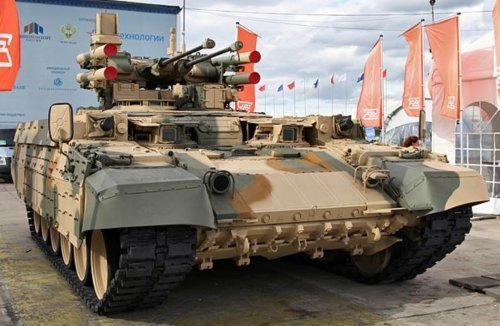
By Vitaly V. Kuzmin (CC-BY-SA-3.0), via Wikimedia Commons
The original design had a single 30mm cannon with co-axial 30mm grenade launcher, and four anti-tank guided missiles mounted on the left side of the turret. The BMPT-2 described here was developed in 2002 and accepted for service in the Russian army in mid 2006. Three have also been bought by the Republic of Kazakhstan. In urban fighting, two BMPTs will be deployed with each MBT, while in rural fighting, one BMPT will be deployed with every two MBTs.
The BMPT is usually built on a standard T-72 tank chassis, though a T-90S chassis can be used. It can be built new, or existing tanks can be converted. Kaktus reactive armour is fitted to the front of the hull and the forward two-thirds of the side skirts. Grilled shields are fitted to the hull rear to provide protection against HEAT warheads, as used on infantry anti-tank rockets and anti-tank guided missiles, and a kevlar interior lining provides protection from spalling. A self-entrenching blade is fitted to the front of the hull to enable the vehicle to dig itself in to a defensive position. Fittings are included for KMT-7 or KMT-8 mine-clearing ploughs. Whether a T-72 or T-90S chassis is used, the same 1,000hp diesel engine as the T-90S is fitted. It has NBC protection and an automatic fire suppression system.
The Shtora active defence system is fitted to provide additional protection against guided weapons. Shtora has a laser warning system which, on detecting a laser, automatically turns the turret to face the direction of the threat. The commander and gunner see threat information on their displays, and can choose to take countermeasures. Current countermeasure options include firing the 81mm smoke dischargers mounted on the turret, or activating a pair of electro-optical jammers. The Shtora system can also be configured to automatically fire the smoke dischargers, without manual intervention. The smoke grenades block thermal imaging as well as vision and laser guidance systems.
The driver sits at the front of the hull in the centre, and is provided with a hatch that has a periscope with day and night vision devices. Behind and to either side of the driver sit two gunners, who operate a pair of AG-30 30mm automatic grenade launchers, mounted above each track. The gunners are provided with day/night sights with thermal imaging. 81mm smoke grenade dischargers are fitted to the hull, covering the frontal arc of the vehicle.
The commander and turret gunner are seated under the low profile, powered turret, the gunner to the left and the commander to the right. Both commander and gunner are provided with a full set of fire controls for the turret weapons, as well as day/night sights with thermal imaging and laser range finders. A digital fire control system is fitted, based on that used in the T-90S. The turret has a pair of linked 2A42 30mm cannons, and four AT-9 anti-tank missiles, two on each side. The 30mm cannons have elevation from -5 to +45 degrees, while the ATGM have elevation from -5 to +25 degrees. The sights and 30mm guns are stabilised in both vertical and horizontal planes.
The AG-30 automatic grenade launchers have 300 rounds each. They can fire HE-FRAG and smoke grenades out to a range of 1,700m. The 30mm cannons can fire HE-FRAG, AP, API-T, APDS and APFSDS ammunition, and have 450 rounds each. The cannons have an effective range of around 1,500m against light armour, 4km against soft targets and 2.5km against helicopters. The AT-9 can be fitted with a tandem HEAT warhead for use against armoured vehicles, a thermobaric warhead for use against buildings and bunkers, or a continuous rod warhead for use against helicopters. It has a maximum range of around 8,000m, and no reload missiles are carried.
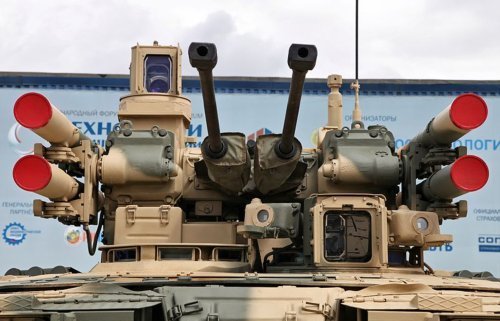
By Vitaly V. Kuzmin (CC-BY-SA-3.0), via Wikimedia Commons
BMPT-2 Specifications
Crew: 5
Speed: 50mph
Range: 300 miles
Weight: 47 tons
Length: 6.95m
Width: 4.75m
Height: 2.1m
Ground Clearance: 0.47m
Fording: 1.4m, 5.5m with preparation
Vertical obstacle: 0.85m
Trench: 2.7m
Armament:
Two linked 30mm cannon with 900 rounds
Four AT-9 anti-tank guided missiles
Two AG-30 30mm automatic grenade launchers with 600 rounds
Armour:
Turret front: 200mm
Hull front: 600mm
Sides: 280mm
March 17, 2013
The Great SOTCW Giveaway
The Society of Twentieth Century Wargamers is pleased to announce a prize draw, open to all members. Twenty-two traders have donated over £300 in books, scenarios, rules, army lists, buildings, models, figures and vouchers for one lucky winner.
The full list of prizes is as follows:
Baker Company : 28mm NVA Rifle Platoon
Commando Miniatures : 28mm Ferret Mk 1
Elhiem Figures : Twenty WWII Red Army figures
Glenn Dean : Soldier/Geek (ebook and paperback)
Grubby Tanks : TBC
Larry Jeram-Croft : Sea Skimmer (ebook and paperback)
Leven Miniatures : 6mm buildings from the housing category: Lock-keepers cottage; Gatehouse cottage; Detached house with garage; Detached house with square bay; Semi-detached house “Roselea”; Detached bungalow; Triple terrace block; Triple terrace with shop fronts; Detached house “Redwoods”; Detached house with side extension; Detached house with dormer windows; Detached house with bay windows
MicroMark : 20 army lists of the winner’s choice (PDF or card)
Minifigs : £10 voucher
Minimi Miniatures : TBC
Moonlite Modelwerks : Two 20mm resin models of the winner’s choice
Outpost Wargame Services : £25 voucher
Pendraken Miniatures : 10mm US Armoured pack: 6x M4 Sherman; 2x M8 “Scott” 75mm HMC; 1x M3 halftrack
Russell Phillips : This We’ll Defend (ebook), A Damn Close-Run Thing (ebook), A Fleet in Being (ebook), The Bear Marches West (ebook and paperback), Red Steel (ebook)
S & S Models : Two items from the “Useful Gaming Bits” range: abandoned car with junk & pick-up truck barricade
Sgts’ Mess : TBC
Steve Anderson : The Losing Role (ebook), Sitting Ducks (ebook), Double-Edged Sword (ebook)
The Hobby Den : Two 1:72 resin models of the winner’s choice
TOEHub : Seven TOE guides, including one not yet released at close of competition
Too Fat Lardies : £25 voucher
Under the Bed Enterprises : 1:76 Israeli Merkava Mark 1
Vandering Publishing : Two sets of rules: Tankwreck & Shipwreck
The competition is open now. See the Journal for full details and instructions on how to enter. If you aren’t a member, it only costs £18 to join in UK/BFPO, £20 in Europe, £25 in the rest of the world. As well as being in with a chance of winning all of the above, members get six issues of society magazine The Journal and discounts from many traders (including 20% off all my books).
March 12, 2013
Book Covers: Does Accuracy Matter?
“You shouldn’t judge a book by it’s cover” is an old piece of advice. It’s generally not meant literally of course, which is probably just as well since most people ignore it when deciding whether or not to buy a book.

However, book covers, including those produced by professional publishing houses, aren’t always accurate. Cover artists are hired for their graphic design skills rather than their knowledge of the book’s subject matter. Design skills are important, as a quick look at the Lousy Book Covers tumblr will show, but this can lead to cover art that doesn’t really fit the book.
The Soviet RPG-7 anti-tank weapon seems to be popular with cover artists. It’s an iconic weapon, which has been used all over the world, and many people will have seem them on news videos. It featured on the cover of Locked On by Tom Clancy and Recoil by Andy McNab. However, it doesn’t lock on to its target, and it has no recoil.

RPG-7: Unguided and recoilless, but popular with cover artists
(CC-BY-2.0, via Wikimedia Commons)
The cover of Red Phoenix by Larry Bond features a Soviet T-72 tank. The T-72 features in the book, and it’s generally an accurate picture, but the tank on the book cover has a rifled barrel, whereas actual T-72s have smoothbore barrels. It’s unfortunate that the design makes the rifling very obvious on the actual book (much more so than in the photo below).
Does it Matter?
Book covers are a form of advertising, and as such, they exist to sell books. Does it matter if the cover image doesn’t tie in very well with the book title, or if the illustration has a minor technical error? For a non-fiction book, the answer is obviously yes. If a book about Soviet tanks had the cover from Red Phoenix, I’d assume that the author hadn’t done much research, and I wouldn’t buy it. For fiction, it’s not quite so black and white.
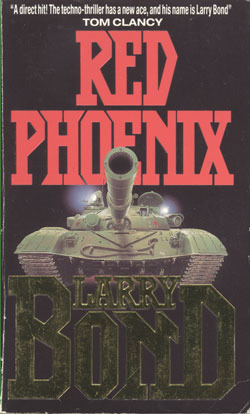
T-72 with rifled barrel
I suspect that a best-selling author like Tom Clancy, Andy McNab or Larry Bond can get away with errors on the cover, but unknown authors less so. The cover image is one element that a potential buyer will use to inform their decision. The author’s name is another, as is the blurb. If a buyer doesn’t know the author, then the cover and blurb is all they have to judge the book by, and so errors may put them off. On the other hand, if a buyer knows and likes the author, they’re more likely to forgive errors on the cover.
In the case of the three books above, the cover didn’t influence my decision. I bought Recoil because it was by Andy McNab, and I like his books. Red Phoenix was the first Larry Bond book I bought, but I knew he had co-authored Red Storm Rising with Tom Clancy (which I’d read and enjoyed), and the blurb sounded interesting. I didn’t buy Locked On because I don’t buy Tom Clancy books any more.
When I look at a book by an author I don’t know, the book cover is the first thing that I will see. If there’s an obvious issue with it, I’ll be less inclined to read the blurb. This is especially true with techno-thrillers, though it’s less true in some other genres. Techno-thrillers have a lot of technical detail, and I expect that detail to be accurate. I once heard the comedian Bill Bailey describe Tom Clancy’s books as “a page of introduction, 572 pages about the technical details of the F-14 Tomcat, and a page of conclusion“. There’s some truth in that description. As a reader, I can forgive a rifled barrel on the T-72 pictured on the cover, but an error like that in the actual text is likely to jar, breaking my immersion and pulling me out of the story.
If you’re a self-published author, most potential readers won’t recognise your name, so the cover and the blurb are important elements in the buying decision. If you’re writing in a genre where readers are likely to expect the details to be correct, make sure they’re as accurate on the cover and blurb as they are in the narrative. If you don’t, potential readers may assume you haven’t done your research, and not buy your book.


